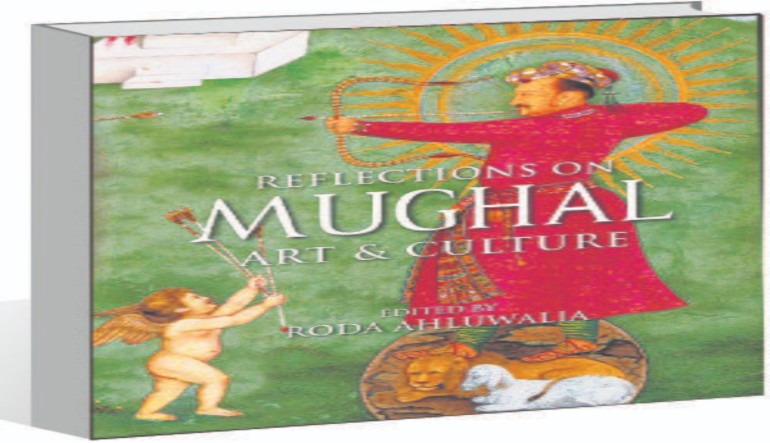top of page
The Week
September 12, 2021 at 12:00:00 AM

Please choose and click one of the following icons to discuss about this news in our Community.
Search for Mughal murals and other such adventures in Roda Ahluwalia’s new book
The Mughals left behind a grand legacy of cultural activity that has inspired succeeding generations. In January 2017, it inspired a two-day seminar held at the K.R. Cama Oriental Institute in Mumbai. This seminar resulted in a volume of 13 engaging and well-researched articles titled ‘Reflections on Mughal Art and Culture’, edited by Roda Ahluwalia.
In her introduction, she writes “The premise of the seminar was to express ideas already germinating in scholarly minds, therefore a broad canvas of subject matter was offered across the Mughal spectrum, to enable participants to write on almost any subject they wished to research.” The book holds true to these words. It touches upon an impressive range of Mughal arts, including miniatures, murals, gardens, lapidary arts and much more. Each article is brilliantly edited, keeping the tone academic but light. It is also a treasure trove of beautiful illustrations that are sure to enthral the reader.
An interesting article in the book is about Subhash Parihar’s search for what at first seem to be elusive Mughal murals. He states that there are but a few surviving examples of figurative murals in Mughal architecture. This is not because of the lack of patronage (which Parihar argues was abundant despite the very nature of Islamic art) but because of the vagaries of time that have left their mark on the old buildings.
According to Parihar, some figurative murals were extant about four decades ago. For example, journalist K. Thomas identified inside the gateway of Arab Sarai at Nizamuddin, a portrait of the Holy Family—Mary, Joseph and Jesus. These paintings have vanished today, leaving no trace of the multi-denominational art that decorated those walls.
Parihar substantiates his work by referring to the accounts of travellers like Jerome Xavier who mentions in his work that Jahangir ordered his artists to prepare large-sized sketches for wall-paintings and to consult the Catholic priests on the sartorial choices of Christian figures. The most interesting takeaway from the article is Parihar’s study of Mughal miniatures focusing on figurative murals painted during the Mughal period. He spots these murals in manuscripts from the Baburnama and Anwar-i Suhayli, as well as folios from the Akbarnama and Windsor Padshanama. This creates a richly illustrated section, which offers us a glimpse of the beautiful murals that may have existed in Mughal India, but are now lost to time.
Another interesting work is Gülru Necipoğlu’s work on Transregional Connections. She challenges the assumptions that architecture of the Ottomans, Safavids and the Mughals has evolved in an unmediated fashion. The three empires had a common Turko-Mongol and Persianate Islamic heritage and later transformed this heritage to accommodate local architectural traditions. She determines iconic building types for each empire for dynastic self-representation, and emphasises the relationship between empire building and architecture. For example, in the Mughal empire the primary architectural type was that of funerary complexes set in elaborate gardens. According to Necipoğlu, this was because the Mughals preferred an “inclusive building type that was not limited to Muslims, but rather accommodated multi-faith and multi-gender dynastic ceremonies”.
Like Parihar and Necipoğlu’s works, each article in the book is extremely insightful and well-presented with helpful endnotes and an extensive bibliography. Whether it is Kavita Singh’s work on the discrepancies between text and art in Mughal chronicles, or Laura E. Parodi challenging the ‘charbagh/paradisiacal narrative’, the massive amount of research and investigation that went into this book is evident in every page. Most importantly this book is suitable even for novices in the field of Art History as it lays out an effective lesson on how to look, describe and interpret art.
Title: Reflections on Mughal Art and Culture
Author: Roda Ahluwalia
Publisher: Niyogi Books
Pages: 340
Price: Rs. 3000
bottom of page









